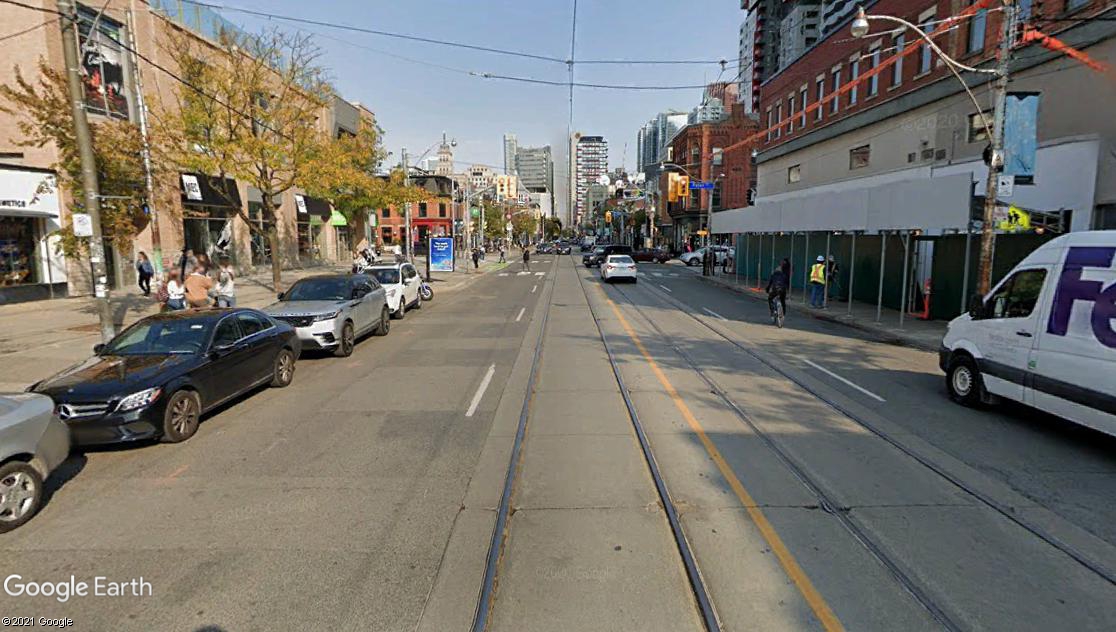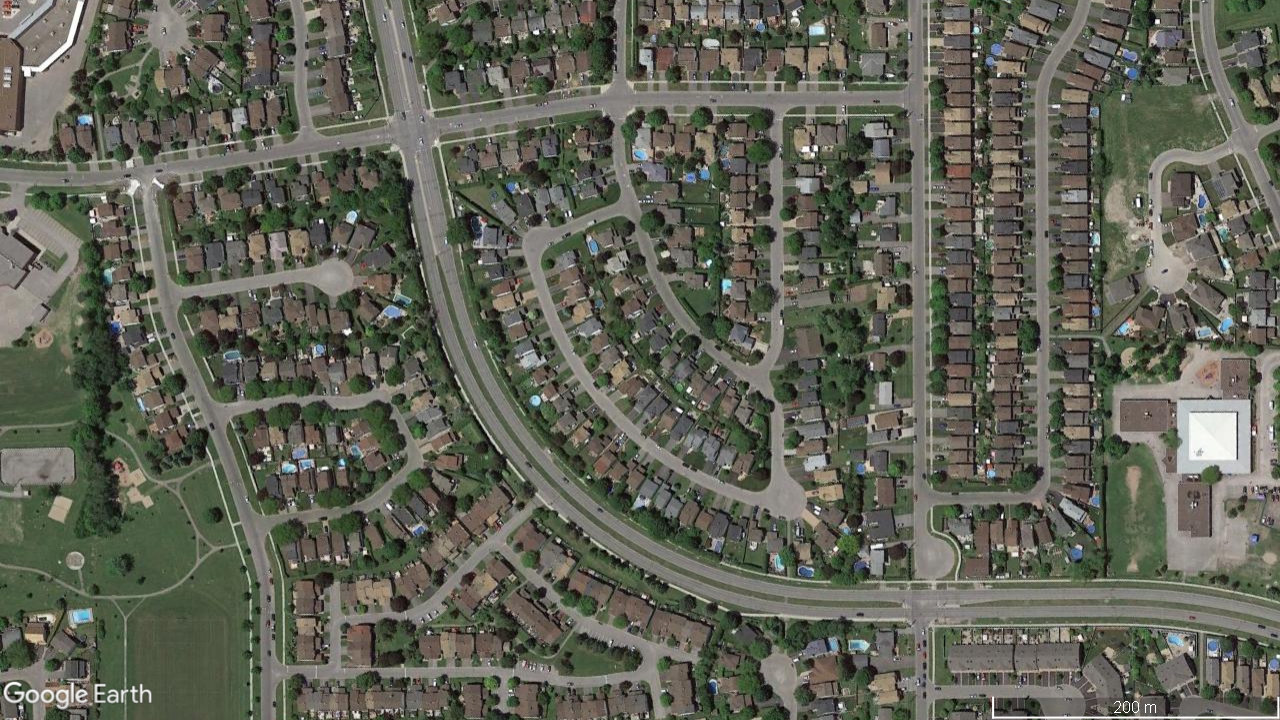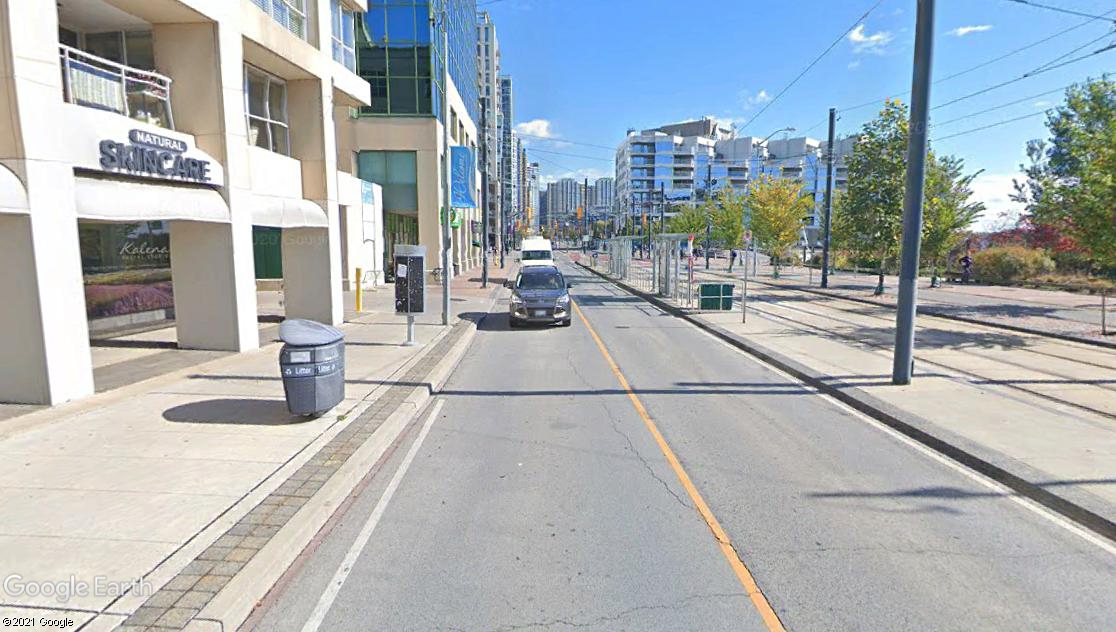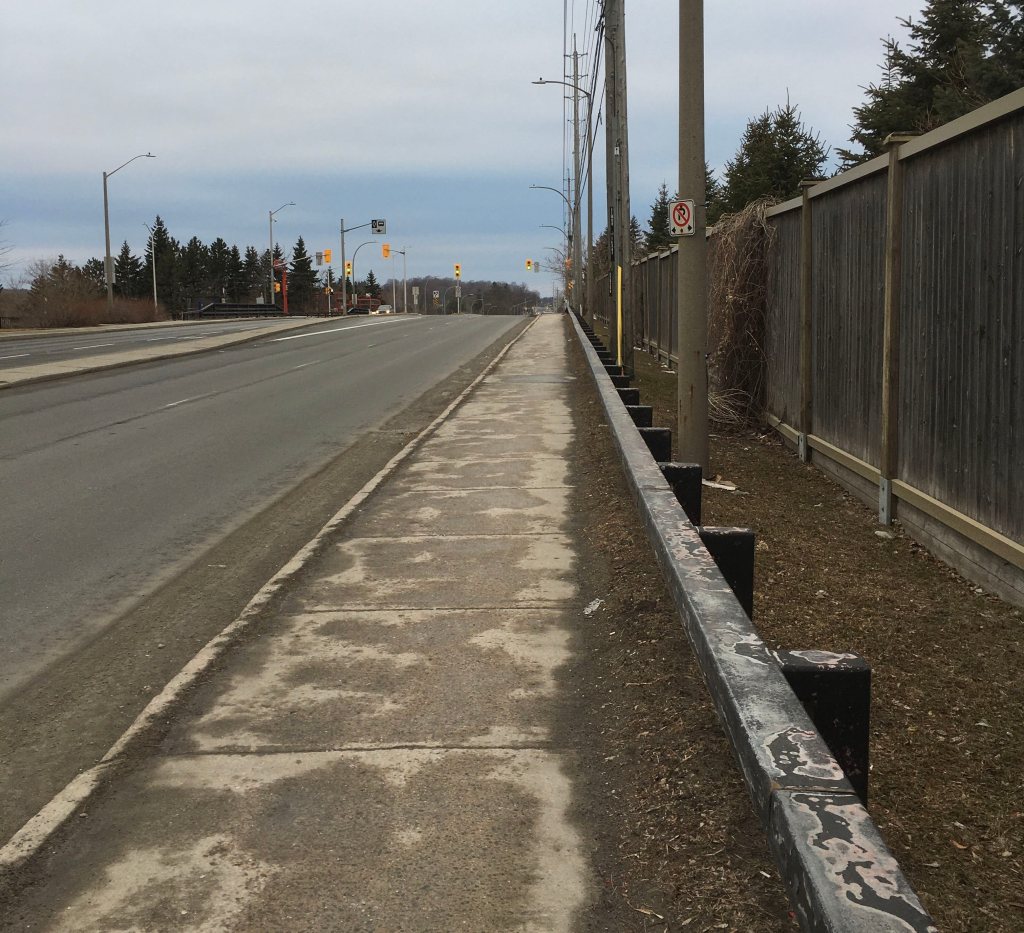Designing for Speed is a weekly multi-part series exploring how speed is factored into the design of our streets, how it influences safety, and how it ultimately shapes our communities. This series is co-authored with Dustin Black, a design engineer working at the intersection of transportation, land use, and the built environment. Join the Beyond the Automobile mailing list to stay up to date with the series.
Design speed determines the geometry of a roadway, which has major effects on the how people drive, and the urban environment overall.
Travelling around a city, it’s easy to find wide variations in how streets are designed. In older urban areas, streets feel more “compact”, while newer suburban arterials feel much bigger and faster, with wide rights-of-way. These geometric differences are no accident; they are part of a decades-long effort to design streets that are both faster and safer for motorists.
The look and feel of a street is shaped by many factors, but perhaps the most influential is “design speed”. The design speed principle stems from a natural limitation of humans: when we move faster, we are able to see and perceive less of our surroundings. At higher speeds, our field of vision shrinks and we have less time to process what we see.
Street design adapts to this limitation by creating an environment where there is less that we need to see and process at higher speeds; buildings are set back farther from the road and lanes are wider to be more forgiving. Consider the difference in how an urban main street and a highway are designed; this is the direct impact of design speed.


So how exactly does design speed play out in road design? We can all recognize a road that feels like it’s meant for fast or slow travel, but what are the actual design elements that create this environment?
Horizontal Curves
Physics is the first factor that contributes to road design: the faster a vehicle is travelling, the less maneuverable it is. When a roadway has to bend, such as in a curve or at an intersection, higher design speeds lead to more gradual curves. Below you’ll see three satellite views, all of the same scale, of street curves of different design speeds.


It’s clear from these images that larger curves not only support higher speeds, they also shape the built environment much more than a small curve. Walkable environments largely depend on the presence of a dense grid network of streets, which can be difficult to overlay when the street network is defined by very large curves.
Tapers
Occasionally the alignment of a roadway needs to shift slightly, usually at an intersection when the road fans out with more lanes. The sharpness of this shift is also determined by design speed.


Lane Widths
Although the average car is only about 2.0m (6.5ft) wide, engineers know that they cannot make lanes that small. Some “buffer” space is needed on either side of the car to account for the small swerves and deviations that happen when a human is operating a vehicle. The design speed philosophy follows that for higher speeds, drivers need more of this “buffer” space to offset the reduction in our ability to process the street environment.
While a 3m (10ft) or a 3.3m (11ft) lane may be suitable for an urban street in many cases, lanes in higher-speed designs and freeways are often closer to 3.75m (12ft).


Clear Zone
For a variety of unfortunate reasons, sometimes drivers veer off the roadway. It could be a patch of ice, swerving to avoid an animal, or drowsiness, but this happens often enough that it’s a factor in roadway design. Essentially, we don’t just design the roadway itself to be safe, we design the area alongside the road to be clear of obstacles such that, if a motorist veers off the roadway, their chance of injury or death is reduced. This is referred to as the “clear zone”, and the size of this zone varies based on the design speed.
Any object located within the clear zone that cannot safely be run over by a speeding vehicle must be protected, removed, or redesigned so that it can be safely impacted. This is why many streets don’t have trees close to the road; they were either removed when the road was built or never planted in the first place. Other obstacles that cannot be easily moved somewhere else like utility poles or waterways are protected by guide rail or other means.
The recommended clear zone varies according to traffic volumes and design speed, from as low as 2m (6.5ft) to as high as 14.5m (48ft). It is generally acknowledged, however, that in urban environments achieving these distances may not be possible or desired due to competing objectives and limited space.


Criticisms
You may have noticed a similar theme to the design elements mentioned: they all contribute to a road design that is forgiving; that is, a road that expects people driving cars to make mistakes and adds some extra buffer room so that when they do, the driver is less likely to be seriously injured or killed. Undoubtedly, forgiving design has saved millions of lives on our roadway networks over the years.
Less desirable, however, are the psychological impacts of forgiving design. Humans driving cars perceive a forgiving roadway as less risky, and offset this by increasing the riskiness of their own behaviour. A roadway that requires less driver focus leads people to drive faster, or feel more comfortable doing things like texting while driving.
You also may have noticed that all of the elements above are focused solely on the safety and behaviour of people driving cars. Assumptions are made that speeding is likely, if not inevitable, and that there is limitless ability to alter the roadway environment and the roadside. In other words, these design elements are well suited for highways and rural roads, but run contrary to the reality of urban spaces.
Any street environment where a mix of road users is present is less predictable and demands more focus and attention from all users. While motor vehicles may be designed to protect their occupants in high-speed collisions, pedestrians and cyclists have no such luxury. Land is multiple times more valuable in urban settings; things that are “roadside obstacles” from a motorist’s perspective – like trees, benches, transit shelters and pedestrian-oriented lighting – are necessary for walkable environments.
The clear zone approach even leads to perverse outcomes like using guide rail to protect hydro poles from errant vehicles, while leaving no more than a curb between those same vehicles and pedestrians.

So in summary, design speed determines the geometry of a roadway, which has major effects on the how people drive, and the urban environment overall. Higher design speeds create designs that are “forgiving” for motorists but offer little benefit to vulnerable road users and the development of urban spaces. Our next posts will focus on how design speed is determined, how high-speed design affects urban spaces, and finally, how we can design urban streets for lower speeds.
Designing for Speed will continue next week. Join the Beyond the Automobile mailing list to stay up to date with the series. Special thanks to Dustin Black for collaborating on this post. Dustin is a design engineer working at the intersection of transportation, land use, and the built environment. Follow him on Twitter @EngineerDustin.
Don’t forget to check out the other posts in the Designing for Speed series below.






Timely series! Currently taking a Highway Engineering course and this would be a nice supplement to conceptually understand the factors that go into road design.
I have a question though: The roadway geometry and in effect, driver behaviour is influenced by the design speed. Are there any impacts of the design on other road users?
LikeLiked by 1 person
Glad the article is well-timed for you, Bomo! Good question – we will be getting more into this in part 3 of the series, so stay tuned. In short, there are many impacts of faster speeds that need to be considered in the design process. Will look forward to your comments on that post!
LikeLiked by 1 person
I like this blog Matt. Very thought-provoking. Bill Harris
LikeLiked by 1 person
Thanks Bill!
LikeLiked by 1 person
I am guessing pedestrians are considered frangible.
Well, they are, but not in a good way.
From design standpoint a footpath should be not frangible.
LikeLike